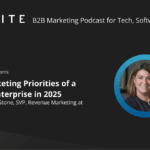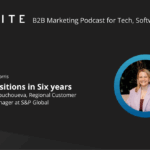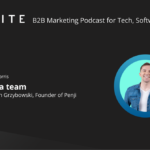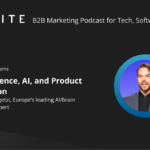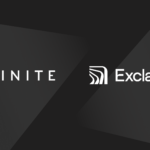This month, we had the very first FINITE online discussion of 2021. We got two experts on B2B marketing attribution to go through what it is, how to use it and the key attribution models.
In our 2021 B2B tech marketing trends and predictions research report, we found that 39.6% of B2B tech marketers think ‘measuring the right KPI’s’ will be their biggest challenge this year! That’s why we decided to dive into attribution, so that you can track the success of your campaigns.
We kicked off the discussion with a welcome from our moderator and Founder Alex, who introduced our experts:
Jessica Dahan, VP Global Marketing at Userlane
Ian Leadbetter, Director at Ruler Analytics
First, Ian introduced the topic of:
‘Closing the loop between offline and online marketing attribution’
Ian explained that inquiries and leads can be stored in separate sales systems and values can be disconnected by various tools. 18% of marketers see attributing leads to marketing channels as their biggest challenge.
We need to figure out which marketing channels are having the most impact online and offline? While it’s easy to track the volume of form fills, proper attribution means what influenced that form submission?
Closed loop attribution framework: Traffic – website – matching – integration – close the loop
Ian then went on to tell us how Ruler Analytics plays a role in the customer buying cycle to solve marketing attribution challenges. He outlined a case study of how the closed-loop process increased revenue by attributing the right marketing leads.
Alex then handed the mic over to Jessica.
Jessica explained how she has been exposed firsthand to the challenges of marketing attribution. That’s why she gave us some…
Guiding principals to which is the best attribution model for your B2B marketing strategy
- The best model for you is one that is aligned with your overarching business model and objectives
- You could use any of these models but make sure it gives you what you need, not just one your best marketing friend uses
- You cannot choose a model in isolation, you need to convince stakeholders by marketing internally
- Attribution modelling can be complex, so sometimes less is more
- You can’t attribute everything. Long term activities are hard to measure but essential for organic growth
Jessica then went on to describe a few traditional models, and the benefits and downfalls of each…
First touch model
This one is generally for small start-ups, or marketers who have joined a company that doesn’t have a large marketing function. This model reports on the first interaction the prospect has with you.
It’s simple, doesn’t require tech platforms and gives good awareness if you don’t know you market. However, it does not reflect the touch points of the entire buying journey or the time frame.
Last touch model
This model captures the most recent valuable interaction: the conversion points. Eg. A demo request or a live event.
It is good for telling you conversion trigger points and when marketing should hand over to sales. However, it doesn’t reflect the entire buying journey, so you may miss out on opportunities.
Linear model
This model attributes revenue to several interactions across the journey.
It’s good for tracking the number of interactions needed for a conversion, as well as the velocity of buying journey and the mix of channels you need. However, it attributes the same value to every channel so it can often be too simple.
The time-decay model
This model shows how each channel has contributed, but the most recent interactions have more importance. It doesn’t apply to every business because in some markets, the beginning of the journey is more important than the end.
It gives you visibility on cadence and velocity so you can plan for next campaigns. However, it offers too much attribution at the end and can overcomplicate things.
Custom models to fit your needs
In Jessica’s opinion this one is the best because you can recognise the value of each stage that matters to you.
It gives you a lot of data and insight so you can better understand how your customers behave and anticipate campaigns. However, it can be complex if you have limited resources and to do it properly you need to invest in platforms.
At the end of Jessica’s presentation, Alex picked out two questions from the event chat and asked them to our speakers:
“To what extent of all the relevant touch points does Jessica think they are capturing? You really can’t know about things like some WoM behind the scenes”
Jessica responded that you need to articulate to stakeholders that you can’t attribute everything. You need to demonstrate that if you just did marketing according to attribution, you wouldn’t look into long term strategies like PR, branding or content. She suggested you flip it around by demonstrating the cost of not doing it. You might see a drop in website ranking or traffic.
“What’s the model you would recommend to a B2B company with enterprise clients and long sales cycle? (6 months+)”
Jessica answered, definitely a custom model. Have a higher multiplier with the first touch point and the last touch point. Then look at the channels in between to see which has a higher level of intent, and therefore more value to you.
To finish off, Alex gave a final thank you to our speakers and for everyone who attended.
On the side chat bar, the discussion got some great comments!

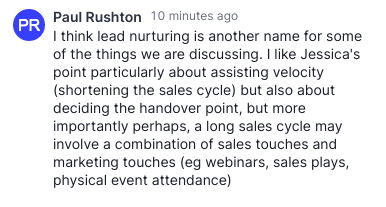
The full online discussion is available to watch back free for all FINITE members. You will find a link to it on our Slack under the ‘announcements’ channel, and it will also be in your inbox!
If you are not a member, but would like a copy of the discussion, apply for a free FINITE membership!

